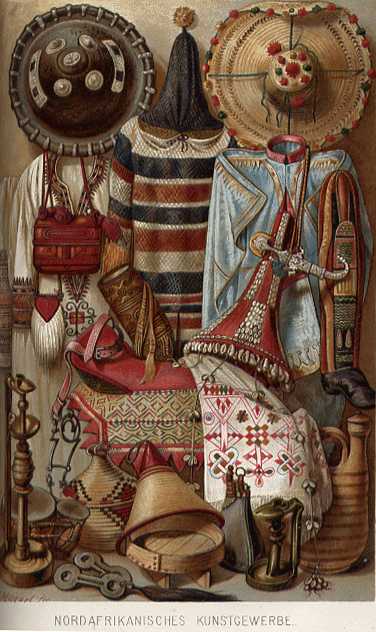
One of the most important German geographers of the late 19th century was Friedrich Ratzel (1844-1904), whose three-volume Völkerkunde (Leipzig and Vienna, Bibliographisches Institut, 1890) is one of those encyclopedia cultural accounts that circulated just as the discipline of anthropology was getting off (in this case literally “on”) the ground. While now a text for curiosity rather than critical scholarship on peoples and cultures, Ratzel’s work is still a fascinating portrayal of cultures being colonized for both revealing the biases of the day and the then-contemporary illustrations of people and material culture. My university library recently divested itself of uncirculated books in storage and one of these was an 1890 edition of the third volume on “Die Kulturvölker der Alten und Neuen Welt.” Whether it was the eye-watering althochdeutsch script of the volume or the mere fact it was written in German, no student or professor at Hofstra ever checked this volume out.
In salvaging a third of Ratzel’s opus for a mere dollar, I could not help but be drawn to the illustrations, mostly lithographs but with a few beautiful color plates. The one shown above is remarkable not only as a testament to museum-style representation of objects, but because the facing transparent page numbers each item and identifies each. Thus, the round object on the top left is a leather Abyssinian shield with metal ornaments. The hat to the top right is from Morocco. A note at the bottom indicates that all of the objects (mostly from Morocco) were housed in the Museum für Völkerkunde zu Berlin.
So how many objects in the painting can you recognize? If anyone would like to have a specific object identified, please let me know. I imagine Herr Ratzel would smile to know that more than a century after his work something about it could still be appreciated.
[The illustration is from Friedrich Ratzel, Völkerkunde (Leipzig and Vienna, Bibliographisches Institut, 1890), vol. 3, plate opposite p. 214.]
[Tabsir Redux is a reposting of earlier posts on the blog, since memories are fickle and some things deserve a second viewing. This post was originally made February 24, 2008]
Daniel Martin Varisco